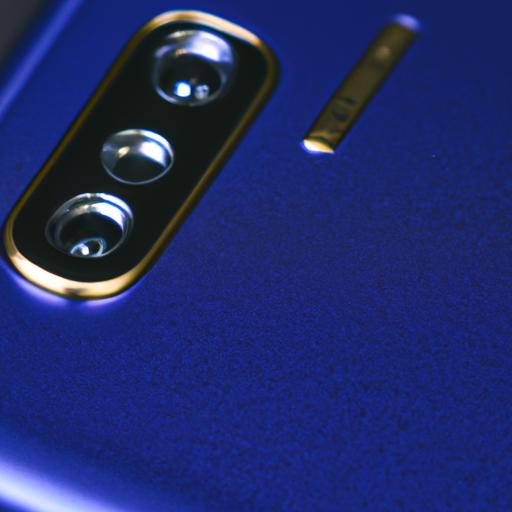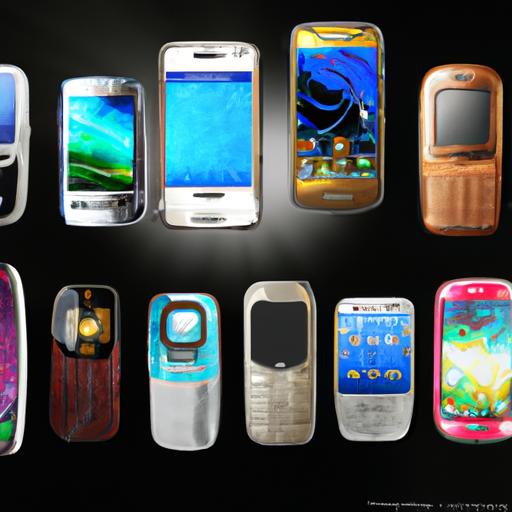In the fast-paced world of technology, smartphones have become an indispensable part of our lives. The year 2010 marked a turning point in the smartphone industry, with numerous brands striving to create the best device on the market. In this article, we will delve into the top smartphones of 2010, examining their features, comparing leading brands, and providing in-depth reviews. Join us on this nostalgic journey as we explore the revolutionary devices that shaped the smartphone landscape.

Top Smartphone Features in 2010
When it comes to determining the top smartphones of 2010, several key features come to mind. These devices were defined by their cutting-edge specifications, including powerful processors, vibrant displays, high-resolution cameras, and advanced operating systems. Back then, a top smartphone was one that offered seamless multitasking, stunning visuals, and an immersive user experience. Let’s dive deeper into these features and understand why they were crucial in 2010.

Comparison of Leading Smartphone Brands
The year 2010 witnessed intense competition among leading smartphone brands. Apple, Samsung, HTC, Nokia, and others fought tooth and nail to dominate the market. Each brand had its flagship device, boasting unique features and design elements. Let’s compare these industry giants and analyze their strengths and weaknesses to better understand the top smartphones of 2010.
Apple: Revolutionizing the Game
Apple, known for its innovation, introduced the iconic iPhone 4 in 2010. With its sleek design, high-resolution Retina display, and powerful A4 chip, the iPhone 4 took the smartphone experience to new heights. The introduction of FaceTime and the App Store’s vast selection of applications further solidified Apple’s position as a trendsetter in the industry.
Samsung: Pushing Boundaries
Samsung, a force to be reckoned with, unleashed the Galaxy S series in 2010. The Galaxy S captivated users with its Super AMOLED display, offering vibrant colors and exceptional contrast. It also paved the way for Samsung’s dominance in the Android market, with its TouchWiz user interface and expandable storage options.
HTC: Innovating User Experience
HTC carved its niche in 2010 with devices like the HTC Desire and HTC Evo 4G. These smartphones boasted powerful specifications, intuitive user interfaces, and impressive camera capabilities. HTC’s commitment to enhancing the user experience made it a strong contender in the smartphone arena.
Nokia: Reinventing Itself
Nokia, once a leader in the mobile phone industry, made a comeback in 2010 with the Nokia N8. This device showcased Nokia’s prowess in camera technology with its 12-megapixel Carl Zeiss lens. Although Nokia faced stiff competition, the N8 demonstrated that the brand still had innovative ideas up its sleeve.
In-depth Review of the Top Smartphones
Now, let’s take a closer look at the top smartphones that stole the limelight in 2010. From their design to performance, we will explore what made these devices stand out and captivate users.
iPhone 4: A Game-Changer
The iPhone 4 revolutionized the smartphone industry with its glass and stainless-steel design. Its Retina display provided unmatched clarity, and the device’s performance was bolstered by the A4 chip. With iOS 4, users enjoyed multitasking capabilities and access to a vast array of applications. The iPhone 4 truly set a new standard for smartphones.
Galaxy S: A Display like No Other
Samsung’s Galaxy S boasted a 4-inch Super AMOLED display, offering vivid colors and deep blacks. The device’s performance, powered by a 1GHz processor, was seamless, providing an unrivaled user experience. Samsung’s TouchWiz user interface added a layer of customization, making the Galaxy S a popular choice among smartphone enthusiasts.
HTC Desire: A Flagship with a Flair
The HTC Desire captured hearts with its sleek design and impressive specifications. Its intuitive HTC Sense user interface provided a seamless and personalized experience. The device’s 5-megapixel camera produced stunning photos, and its expandable storage options gave users ample space for their media files.
Nokia N8: Focused on Photography
Nokia’s N8 stood out for its exceptional camera capabilities. The device’s 12-megapixel Carl Zeiss lens, Xenon flash, and large sensor allowed users to capture breathtaking photos. The N8 also featured HDMI output, enabling users to enjoy their content on larger screens. Despite facing tough competition, Nokia reminded the world of its ability to innovate.
Frequently Asked Questions (FAQ)
Q: How long does the battery last on these smartphones?
A: Battery life varied among the top smartphones of 2010. On average, these devices provided around 6-8 hours of talk time and up to 300 hours of standby time. However, it’s important to note that battery performance could vary based on individual usage patterns.
Q: Did these smartphones receive software updates?
A: Yes, most of these smartphones received software updates to enhance performance, introduce new features, and address any bugs or security vulnerabilities. However, the software update lifespan varied across brands and models.
Q: Were these smartphones durable?
A: The durability of smartphones depends on various factors, including build quality and user handling. Generally, the top smartphones of 2010 were built to withstand normal daily usage. However, accidents such as drops or water damage could still affect their lifespan.
Conclusion
The year 2010 ushered in a new era of smartphones, with manufacturers pushing the boundaries of innovation. From Apple’s iPhone 4 to Samsung’s Galaxy S, HTC’s Desire, and Nokia’s N8, each device left an indelible mark on the industry. These top smartphones of 2010 set new benchmarks for design, performance, and user experience. As we reflect on these revolutionary devices, it’s clear that they paved the way for the smartphones we know and love today.
